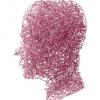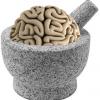Edited by devinthayer, 31 July 2016 - 11:31 PM.

Increasing activity in the Superior Parietal Lobe (SPL)?
#31
Posted 31 July 2016 - 11:31 PM
#32
Posted 03 August 2016 - 11:15 AM
Likewise, Strattera is shown to increase frontal NE and DA, and global NE - which may amount to why it has a supposedly better effect on SCT-problems - but how does it do that?
I've got some hypothesis (probably stupid one, idk).
Recently I found this:
http://sonjalyubomir...ers/NWL2008.pdf
The neuroimaging study of rumination described earlier (Johnson et al., 2008) also supports a distinction between analytical and experiential ruminations. In this study, there were two rumination conditions, an analytical condition (e.g., think about why things turn out the way they do, what your feelings mean), and an experiential condition (e.g., think about your current physical sensations, how motivated you feel). In both dysphoric and nondysphoric individuals, the analytical rumination condition tended to result in more medial PFC activity than did the experiential rumination condition, suggesting it induced greater self-referential thinking. However, dysphoric participants and those high in rumination showed greater reduction in activity in the anterior medial PFC, which is associated with approach-related goals, in the analytical rumination condition than they did in the experiential rumination condition, suggesting the dysphorics and ruminators were thinking less about approach-related goals when engaging in analytical rumination than when engaging in experiential rumination.
The behavioral work of Watkins and colleagues and our recent neuroimaging findings suggest that the maladptive component of rumination may be its abstract analytical aspects, whereas a more experiential form of self-reflection is not maladaptive. Furthermore, our distraction induction’s positive effects on thinking may not be solely due to improvements in participants’ moods, because Watkins’ experiential induction does not lift participants’ depressed moods, but it does improve the quality of their thinking. This work clearly has important implications for therapeutic interventions for people prone to depressive rumination.
I must be wrong somewhere (please feel free to correct me), but it looks like compensation mechanism.
Mind feels Depression and "feeling of problems", and
-> mind tries to prevent it
-> mind makes internal interruptions and rumination (trying to increase activity in PFC) (<---- and that's where SCT people get their problems)
-> but the activity needs to be experiential rumination ("think about your current physical sensations, how motivated you feel"), it just works better
-> these distractions (and experiential rumination) are increasing activity in PFC
-> and increasing activity in PFC makes positive effect on thinking (and probably will get the problem resolved)
NE also increases activity in PFC so:
- thinking is improved
- rumination/distraction is not necessary anymore so it vanishes
And physical exercises make you think about your physical sensations more - which also stimulates PFC. With all the positive result.
#33
Posted 03 August 2016 - 02:16 PM
Likewise, Strattera is shown to increase frontal NE and DA, and global NE - which may amount to why it has a supposedly better effect on SCT-problems - but how does it do that?
I've got some hypothesis (probably stupid one, idk).
Recently I found this:
http://sonjalyubomir...ers/NWL2008.pdfThe neuroimaging study of rumination described earlier (Johnson et al., 2008) also supports a distinction between analytical and experiential ruminations. In this study, there were two rumination conditions, an analytical condition (e.g., think about why things turn out the way they do, what your feelings mean), and an experiential condition (e.g., think about your current physical sensations, how motivated you feel). In both dysphoric and nondysphoric individuals, the analytical rumination condition tended to result in more medial PFC activity than did the experiential rumination condition, suggesting it induced greater self-referential thinking. However, dysphoric participants and those high in rumination showed greater reduction in activity in the anterior medial PFC, which is associated with approach-related goals, in the analytical rumination condition than they did in the experiential rumination condition, suggesting the dysphorics and ruminators were thinking less about approach-related goals when engaging in analytical rumination than when engaging in experiential rumination.
The behavioral work of Watkins and colleagues and our recent neuroimaging findings suggest that the maladptive component of rumination may be its abstract analytical aspects, whereas a more experiential form of self-reflection is not maladaptive. Furthermore, our distraction induction’s positive effects on thinking may not be solely due to improvements in participants’ moods, because Watkins’ experiential induction does not lift participants’ depressed moods, but it does improve the quality of their thinking. This work clearly has important implications for therapeutic interventions for people prone to depressive rumination.
I must be wrong somewhere (please feel free to correct me), but it looks like compensation mechanism.
Mind feels Depression and "feeling of problems", and
-> mind tries to prevent it
-> mind makes internal interruptions and rumination (trying to increase activity in PFC) (<---- and that's where SCT people get their problems)
-> but the activity needs to be experiential rumination ("think about your current physical sensations, how motivated you feel"), it just works better
-> these distractions (and experiential rumination) are increasing activity in PFC
-> and increasing activity in PFC makes positive effect on thinking (and probably will get the problem resolved)
NE also increases activity in PFC so:
- thinking is improved
- rumination/distraction is not necessary anymore so it vanishes
And physical exercises make you think about your physical sensations more - which also stimulates PFC. With all the positive result.
A good observation Dreaming_strix, this would explain the anxiety that most SCT-ers feel - which comes from over-analyzing, or simply burning out when unable to break through and complete a task.
I wouldn't say it entirely describes the condition though - because not all SCT-ers have anxiety - there are some who don't have it, or not to any great extent.
So, rumination is only a part of the symptoms - there are other aspects as well. I would say we have greater difficulty to shift our analysis though, much like you noted there.
I'm guessing the "spacing out" which many of us experience as children, and the slowness, are the other two great dimensions of the disease. The spacing out is especially interesting... because it's seemingly the opposite of rumination: to fill your mind to the breaking-point. Space-out is complete emptiness though... The end-result is similar however - a decrease in activity.
#34
Posted 03 October 2016 - 02:28 PM
All right, since I'm starting to feel better in the burnout-department, thanks to NSI-189, I figured it's time to look at NRI-compounds.
Now, something which I'm curious about, is the SELECTIVITY of these compounds - is there any difference as to where Reboxetine, Atomoxetine and Viloxazine actually binds to NET and prevents Norepinephrine reuptake?
I know there is data for some of the SSRI's I believe, so it would be interesting with some data on the NRI's as well...
Mainly trying to figure out which one of them is the most selective towards the Superior Parietal Lobe, so as to get a relatively side-effects free treatment.
On another note, I found this discussion on Reddit concerning Kappa-Agonism, and it would appear as if it is specifically the metabolite which has the Kappa-agonism - however, it's also implied that how big your exposure to the metabolite will be, is also dependent on your CYP2D6 genetic polymorphism.
Well... in that case... seeing as I'm an ULTRA-SLOW metabolizer...! There won't be much of that action. Huh.
BUT... it's still extremely pertinent to most people taking the drug - blocking Kappa is key towards making Atomoxetine a sustainable drug.
Help me weed it all out here:
https://www.reddit.c...time_in_adults/
#35
Posted 05 October 2016 - 11:15 AM
All right, since I'm starting to feel better in the burnout-department, thanks to NSI-189, I figured it's time to look at NRI-compounds.
Now, something which I'm curious about, is the SELECTIVITY of these compounds - is there any difference as to where Reboxetine, Atomoxetine and Viloxazine actually binds to NET and prevents Norepinephrine reuptake?
I know there is data for some of the SSRI's I believe, so it would be interesting with some data on the NRI's as well...
Mainly trying to figure out which one of them is the most selective towards the Superior Parietal Lobe, so as to get a relatively side-effects free treatment.
On another note, I found this discussion on Reddit concerning Kappa-Agonism, and it would appear as if it is specifically the metabolite which has the Kappa-agonism - however, it's also implied that how big your exposure to the metabolite will be, is also dependent on your CYP2D6 genetic polymorphism.
Well... in that case... seeing as I'm an ULTRA-SLOW metabolizer...! There won't be much of that action. Huh.
BUT... it's still extremely pertinent to most people taking the drug - blocking Kappa is key towards making Atomoxetine a sustainable drug.
Help me weed it all out here:
https://www.reddit.c...time_in_adults/
TLDR but can say I don't agree with the title. Atomoxetine decreased in effectiveness over 6 months. Up from 25mg to 40mg now, and it is still not enough. At these low doses, it may matter how much I weigh. Gaining weight affects the dose... and maybe 5% makes that much of a difference... or maybe it's just not the same for everyone.
I will say that out of the noradrenergics, methylphenidate and atomoxetine work better than pseudophedrine and oxymetazoline that work better than the amphetamine class drugs. That's me, and not everyone else responds as well to noradrenergics. I have little response to propylhexedrine and even smaller to levomethamphetamine and deprenyl. I had no response to guanfacine or clonidine.
It's not about getting norepinephrine alone - it's about where you are getting it and how. The order of that list would perplex many a people, saying that I have a better response to some over the counter cold medicine than I do to pharmaceutical grade speed or that oxymetazoline works better than other drugs of the same class which have no effect. It's because we're not done with the science of cognition as a whole, and the drugs have hidden combo moves not in the manual. There might be walkthroughs or cheats hints and tips online, but it might take a while for others to discover them and publish them.
#36
Posted 05 October 2016 - 03:48 PM
I will say that out of the noradrenergics, methylphenidate and atomoxetine work better than pseudophedrine and oxymetazoline that work better than the amphetamine class drugs. That's me, and not everyone else responds as well to noradrenergics. I have little response to propylhexedrine and even smaller to levomethamphetamine and deprenyl. I had no response to guanfacine or clonidine.
interesting info. now, pseudophedrine is not available anymore, right? oxymetazoline is nasal spray. are you talking about taking it orally?
i agree on guanfacine (no effect) or clonidine (massive sedation).
#37
Posted 08 October 2016 - 05:31 PM
I can still get pseudofed where I live. Propylhexedrine is hard to come by thanks to all the tweakers, but it doesn't dry out my nose as bad as the oxymetazoline. I have no idea if oxymetazoline can be ingested or if that causes digestive issues or is even bioactive. Let me look it up...I will say that out of the noradrenergics, methylphenidate and atomoxetine work better than pseudophedrine and oxymetazoline that work better than the amphetamine class drugs. That's me, and not everyone else responds as well to noradrenergics. I have little response to propylhexedrine and even smaller to levomethamphetamine and deprenyl. I had no response to guanfacine or clonidine.
interesting info. now, pseudophedrine is not available anymore, right? oxymetazoline is nasal spray. are you talking about taking it orally?
i agree on guanfacine (no effect) or clonidine (massive sedation).
#38
Posted 27 October 2016 - 02:42 PM
I've finally found it!! :D A MAP of the Superior Parietal Lobe!
Transmitter receptors reveal segregation of cortical areas in the human superior parietal cortex: Relations to visual and somatosensory regions
https://www.research...sensory_regions
Check out figure 4, folks - it's the bees-knees.
Curious though... what I read out from the receptor-densities is that these are the receptors which are the most heavily concentrated in the SPL:
GABA-B (yeah-buh whatnow??)
Muscarinic type 2 (ok? hmm... choline)
NICOTINIC (da fugg?! Doesn't say which type though... could this be related to why I react badly to Bupropion?)
ALPHA-2 (NOW we're talking...! Intuniv - you beautiful, beautiful sonuvabitch... we've got a DATE!)
So, what do you think guys? What conclusions or hypotheses can we draw from this? I suppose we can draw the conclusion that Nicotinic or gaba-related meds might relate to us SCT-ers as well. The GABA makes some sense... since Metadoxine has been shown to have effect, and that's a compound which increases GABA-production, presumably.
GABA-B receptor malfunction may be related to why we SCT-ers have so much more anxiety than the neurotypicals as well.
Since there is densities with both nicotinic and muscarinic receptors, I keep thinking that something actetylcholine-related could work... Yet there's no evidence of that - in fact, several of the racetams seems to either not work on SCT-ers or actually exacerbate some symptoms.
It's clear that the Alpha-2-receptors needs punching though - we know Norepinephrinergics help to some extent - so this fits in quite nicely.
On another note - notice how the receptor-densities for Dopamine are thin as all h*lll? Yeah, that explains why stimulants are utterly USELESS.
EDIT:
I notice also that the Alpha-2-receptors seem to be populated in a part which borders to Broddman area 19? (the extrastriate cortex) Which is apparently ALSO an area of the brain supposedly related to attention, in some respect.
https://en.wikipedia...rodmann_area_19
Can we check for compounds which bind to Area 19 as well, then? To try and find the most effective treatment - something norepinephrinergic which binds selectively to these two parts of the brain.
Edited by Stinkorninjor, 27 October 2016 - 02:57 PM.
#39
Posted 29 October 2016 - 08:40 PM
Edited by Oracle Laboratories, 29 October 2016 - 08:41 PM.
#40
Posted 30 October 2016 - 01:01 AM
Hey Stinkorninjor,I received your message, and figured that I would simply reply to it here, so that everyone has access to it. I will try to cover as much as is relevant, regarding the symptoms, neuro-chemistry, and diagnostic criteria, that constitute your condition.Both SCTD (Sluggish Cognitive Tempo Disorder), as well as ADD (Attention Deficit Disorder) and ADHD (Attention-Deficit-Hyperactivity-Disorder) are all diagnosed under the ADHD umbrella of diagnostic criteria - using the same diagnostic criteria in the DSM-5 (Diagnostic and Statistical Manual for Mental Health Disorders) and the WHO (World Health Organization's) diagnostic criteria for attention deficit and cognitive disorders. To be completely honest, SCTD is a disorder that is still being categorized by the mainstream medical establishment - as for now, it is listed under the umbrella of attention deficit disorders, under Attention-Deficit-Hyperactivity Disorder, which does not accurately or completely characterize Sluggish Cognitive Tempo Disorder. The issue is, that some patients suffering from this disorder have vastly different symptoms, and SCTD can also be caused by underlying, preexisting psychiatric conditions, such as Major Depressive Disorder, Post-Traumatic Stress Disorder, and anxiety conditions such as Panic Disorder, so it is often a difficult disorder to pin down in terms of diagnostic criteria.The symptoms that constitute the diagonstic criteria for these disorder are typically seen in school age children and adolescents (although many adults still retain some symptoms), and is typically much more commonly in boys. Pharmacologically, these disorders are characterized by insufficient catecholamine neurotransmission in the Frontal Lobe, Prefrontal Cortex, and the Parietal Lobe, and typically include all three of the excitatory (simulatory) catecholamine neurotransmitters, which includes dopamine, epinephrine (also known as adrenalin), and norepinephrine (noradrenalin). (However, although much less-frequently taken into consideration, is the neurotransmitter Glutamate - which is responsible for memory formation, memory recall, and the transfer of short-term memory from the Basal Ganglia and the Striatum to long-term memory storage in the Hippocampus. - (Which can obviously contribute a fair bit to overall cognition).Now, generally in severe cases of children or adolescents with severe Attention-Deficit Disorder (ADD) or Attention-Deficit-Hyperactivity Disorder (ADHD), Central-Nervous-System stimulants (that boost levels of the catecholamine neurotransmitters) are prescribed. Now, it might seem counter-intuitive to administer a Central-Nervous-System stimulant to a kid who cannot sit still, is impulsive, commonly abandoning an unfinished task for another, and cannot focus on one particular activity. However, the reason that the children (and adults) that suffer from attention-deficit disorders behave like this in the first place, is because certain regions in their brains are under-stimulated, and so they seek out additional stimulation through compulsive and aimless activities, and/or via additional visual and/or audio sensory input, for stimulation. However, when these patients are administered a CNS stimulant that boosts levels of the catecholamine neurotransmitters (dopamine, epinephrine, and norepinephrine) - (either via the use of a catecholamine releasing agent, such as amphetamine (racemic), dextroamphetamine, and in rare cases Methamphetamine - or, via Dopamine / Norepinephrine Reuptake Inhibitors (DNRI‘s), like Methylphenidate (Ritalin, Concerta), and drugs like cocaine, etc.However, there are some medications that act as Dopamine and/or Norepinephrine Reuptake Inhibitors that present their therapeutic effects via accumulative dosing, and which are not associated with any kind of decency or abuse potential - if the patient is concerned about being dependent on a Central-Nervous-System stimulant. Drugs like Atomoxetine (brand name Straterra), and Bupropion (brand names Wellbutrin, Zyban), and several other available DNRI drugs that are not associated with dependency or a abuse liability. Unfortunately, most of these drugs are not quite as effective as the CNS catecholamine stimulants are, and they take a considerably longer dosing period before effects become apparent, but they are an option.The TAAR1 Receptor Agonists (such as the amphetamines) cause widespread neuronal release of dopamine and norepinephrine from their pre-synaptic vesicles into the synapse, where concentrations of dopamine and norepinephrine dramtically increase, allowing more dopamine and norepinephrine to agonize the D1, D2, etc Dopamine Receptors and Alpha and Beta Noradrenergic Receptors, on the post-synaptic neuron.The DNRI’s also work to increase neuronal concentrations of the catecholamine neurotransmitters Dopamine and Norepinephrine, but in a much different way. The Dopamine/Norepinephrine Reuptake Inhibitor drugs, possess affinity for the DAT (Dopamine Transporter Molecule) and the NET (Norepinephrine Transporter), which is responsible for reabsorbing an excess of a neurotransmitter in the synaptic space, if concentrations of that neurotransmitter become too high. Essentially, if too much Dopamine is being released by a neuron into the synaptic space, the brain’s DAT (Dopamine Transporter Molecule) is released and binds to the excess dopamine, which is then transported back into the pre-synaptic neuron that released it in the first place. The Dopamine / Norepinephrine Reuptake Inhibitors bind to the Dopamine and/or the Norepinephrine transporter molecules, rendering them useless (by blocking their affinity for dopamine and/or norepinephrine). This, in turn, causes a flood a Dopamine and/or Norepinephrine across the synaptic gaps between neurons, which causes an extreme increase in the amount of Dopamine and Noradrenergic Receptors that are being agonized by post-synaptic neurons.Sluggish Cognitive Tempo Disorder (SCTD) is typically not as severe as ADD or ADHD, and it’s symptoms are generally much less pronounced. On this note, some of the non-stimulant catecholamine reuptake inhibitors that are often not effective enough against ADHD, may be enough to effectively suppress your symptoms. Personally, I am not a big fan of Atomoxetine (Straterra). Rather than acting as a Dopamine/Norepinephrine Reuptake Inhibitor, it functions as a non-selective Serotonin/Norepinephrine Reuptake Inhibitor, with it’s action on SERT (the Serotonin Transporter Molecule) not serving much purpose in the treatment of ADD or ADHD, plus, it’s overall binding affinities (Ki, Kd, and IC50) are not all that impressive, and many who do end up trying it for ADHD report that it was no where near as effective as the CNS stimulant drugs. (Many in this thread seem to have had good luck with it. However, don’t ever underestimate the placebo effect).Although not too commonly used for this purpose (compared to Atomoxetine), Bupropion (Wellbutrin, Zyban) is a fairly effective Dopamine/Norepinephrine Reuptake Inhibitor, yet it also acts as a mild releasing agent of dopamine and norepinephrine as well! Bupropion is common used with noteworthy success in individuals suffering from anhedonia as a symptom of Major-Depressive Disorder and other forms of depression. Bupropion (being both a reuptake inhibitor and releasing agent of the catecholamines) produces mild stimulatory effects, which often motivate depressed people to seek out activities and social contact, that they otherwise would not have the desire or motivation to do so on traditional antidepressant agents, such as Selective-Serotonin Reuptake Inhibitors (SSRI’s) or Tricyclic Antidepressants. I have seen the same type of improvement in patients with SCTD using daily Bupropion treatment.Although, I certainly do not mean to outright condemn the Central-Nervous-System stimulants, as millions of people use them in therapeutic, medical doses, without issue - and they tend to be very effective drugs. (I am on an experimental amphetamine analogue as I’m typing this (2,4-Difluoroamphetamine) as a part of a project my team and I are working on). If taken properly in a medical context, at appropriate therapeutic doses, a catecholamine-releasing agent like amphetamine (racemic) or dextroamphetamine can greatly reduce the symptoms of both classic attention deficit disorders (ADD, ADHD), as well as cognitive disorders like SCTD. Additionally, so too can the catecholamine (dopamine/norepinephrine) reuptake inhibitor stimulant drugs such as Methylphenidate, can also be very effective. Another class of drugs that you could try, that technically are stimulants (but to a MUCH lesser degree than traditional CNS stimulants) are the -afinil family of drugs, which contains Adrafinil, Modafinil, Armodafinil, Fladrafinil, Flmodafinil, etc. - In full-disclosure and honesty, we still do not know exactly how this class of drugs works precisely. We do know that synaptic concentrations of serotonin, dopamine, and norepinephrine increase when the drug is administered - it appears due to reuptake inhibition. However, this action must be indirect, since none of the compounds in the class appear to have any affinity for the SERT (serotonin transporter), DAT (dopamine transporter), or NET (norepinephrine transporter) directly. Now, although these drugs are excitatory (stimulatory), they are classified as eugoroics or “wakefulness-promoting agents” rather than stimulants, and they are nowhere near as rough on the various neuronal systems that amphetamines work on, for example, and patients typically do not have any trouble eating or sleeping while taking Modafinil, as compared to amphetamine or methylphenidate. - Modafinil and it’s (+) enantiomer “Armodafinil” are scheduled in the US under Schedule IV (whereas amphetamines and methylphenidate are Schedule II). However, the Analogue Act only applies to Schedule I and II drugs, and so the various analogues of Modafinil (Adrafinil, Fladrafinil, Flmodafinil, etc) are readily obtainable online, and are used as nootropic smart drugs to improve cognition. Now, it appears that the dopamine and/or norepinephrine influx that are caused by the -afinil family drugs occurs primarily in the Frontal Lobe; the dopamine/norepinephrine release that is caused by amphetamine and it’s relatives is more widespread - occurring throughout the entire Prefrontal Cortex as well as the Superior and Inferior Parietal Lobes.The only other two drugs that were mentioned in this thread, that I agree with pharmacologically (to some extent), that could be feasibly administered, and that have rather wide and well-established therapeutic indexes, and that are generally well-tolerated with a fairly good safety profile are Viloxazine and Guanfacine - although of course, for different mechanism(s)-of-action (Viloxazine acting as a highly-selective noradrenergic reuptake inhibitor, and Guanfacine acting as a selective and competitive agonist of the Alpha-2a Adrenergic Receptor.The Parietal Lobe is one of the densest neuronal structures outside of the epithalamus and hippocampus, and is very densely seeded with Serotonergic Receptors (5HT-1a - 5HT-1d, 5HT-2a - 5-HT2e, 5-HT4, 5-HT6a - 5HT6c, and 5-HT7), Glutaminergic Receptors (both AMPA and mGluR subtypes), Dopaminergic D1 and D2 Receptors, and Alpha-2 as well as Beta-1, Beta-2, and Beta-3 Adrenergic Receptors, Sigma Receptors, TAAR1 and TAAR2 Receptors, TA1, TA3, and TA5 Receptors, Imidazoline Receptors, mu-Opioid, Delta-Opioid, Kappa-Opioid, and other G-protein-coupled Receptors such as histamine-1 Receptors, and Cannabinoid CB1 and CB2 Receptors. All of these (generally excitatory) neurotransmitter target sites are responsible for the processing of new visual and sensory (by feel) input, and the recalling of memories specific to that sensory input. (So, although dopamine/norepinephrine increase is enough to excite Glutamate channels enough, indirectly, the use of a supplement that enhances Glutaminergic neurotransmission, like the racetam family of drugs, such as Piracetam, Aniracetam, and Oxiracetam could also help overall cognition.It’s interesting that you brought up Kappa-Opioid Receptor antagonism, also. While that action would not do much beneficially in this scenario, the main project that I am working on right now, is a novel class antidepressant/anxiolytic of the Kappa-Opioid Antagonist class, known as Trimaxynine. It has been a goal of mine since I was 18 to harness the antidepressant and anti-anxiety properties of opioids, yet separate them from their issues with tolerance and physical dependence. It’s been years in the making, but we are soon readily to release our publication on Trimaxynine - a structural derivative of the Kratom Tree alkaloids Mitragynine and 7-Hydroxymitragynine. The opioid complex was one of my first areas of study when I started in this field, and I still hold it close as one of my foremost areas of research interest. There are a few other Kappa-Opioid antagonist research drugs that have popped up while we have been developing our compound (ie ALKS-5461), but none of them are practical, nor are they as safe and well-tolerated as Trimaxynine, which is a very refined and selective compound. As far as Atomoxetine possessing Opioid Receptor affinity, I don’t know where you may have heard that, but I can almost assuredly say that it’s bullshit (at least for the mu-Opioid and Delta-Opioid Receptors). There are a few essential functional affinity groups that a compound must possess to retain opioid receptor affinity (ie, hydroxyl groups, methoxy groups, 1-ethyl or 1-methyl groups, etc), and Atomoxetine does not possess any of them, being a rather basic Phenylpropan-1-amine. Off the top of my head, I can’t see how any active metabolites could be produced that would possess any opioid receptor affinity, either.If I recall from your message, you had asked me to review one of the publications linked in this thread and try to explain it’s conclusions on an easier level, to convey the results in a way that could be understood by most of the posters here? Which publication was it? I will try to scan through the links posted when I have a bit of spare time, and will relay my impressions, once I have had time to review the paper(s).-John GonaPsychopharmacologist,Psychotropic Treatment Specialist
Oracle LaboratoriesNeuroPsych Institute
Ey, whasup, John?! : ) Most glad to have you in this thread - we could use a man of your knowledge here.
I give you thanks for the run-down of the current views on the disorders and the common medications.
Here then, is the study which I wanted you to comment on - I forgot to attach it in my PM! >_<
Transmitter receptors reveal segregation of cortical areas in the human superior parietal cortex: Relations to visual and somatosensory regions
https://www.research...sensory_regions
It needs to be put into context when juxtaposed against this newer data, which, through fMRI and PET -scans have finally begun to unravel some of the mechanisms involved in the Sluggish Cognitive Tempo Disorder.
Differentiating SCT and inattentive symptoms in ADHD using fMRI measures of cognitive control
http://www.ncbi.nlm....les/PMC4474281/
Dr. Russell Barkley made this comment regarding the new data:
"Of greater interest was the finding that the higher levels of SCT symptoms were associated with hypoactivity in the left SPL to cues in general."
I believe Barkley was the first to hypothesise that SCT was a parietal, rather than frontal, disorder, by noticing how some of his patients (among them, his own son) actually showed symptoms similar to "Balint's Syndrome", - yet, their medical history showed no recorded brain damage of any kind, or at least not any that would explain the symptoms.
https://en.wikipedia...lint's_syndrome
He now appears to be proven right... the Parietal lobe among SCT-ers show a marked decrease in activity. The question then, is what KIND of activity is decreased?? And how does this relate to the receptor-densities in the SPL, if at all?
There are notes in the litterature that Norepinephrine in particular plays a key role in this region of the brain - which does seem to imply that the high amount of Alpha-2-receptors uncovered in the recent study might be of particular interest here. (the info is in figure 4 in the linked study)
Btw, regarding Atomoxetine, it is indeed the metabolite which shows the opioid-affinity, and not Atomoxetine itself. 4-hydroxyatomoxetine shows weak affinity, but it's definitely there.
I personally suspect that this is the reason why Atomoxetine causes more suicidal ideation than Reboxetine or Viloxazine - they do not have any recorded Kappa-affinity whatsoever.
Synthesis and biological evaluation of the major metabolite of atomoxetine: elucidation of a partial kappa-opioid agonist effect.
https://www.ncbi.nlm...pubmed/15225731
Atomoxetine, ADHD, and the ongoing debate about increased risk of suicidal behaviors: the understudied role of kappa opioid receptor agonism
http://www.tandfonli...38.2016.1200209
Here's the molecular structure of 4-hydroxyatomoxetine:
https://pubchem.ncbi...910#section=Top
Doesn't seem very similar to any of the opioids, I agree, however, there's a pattern to it... Much like Noribogaine, it's also a weak NMDA-antagonist, and Serotonin reuptake enhancer.
And just like Noribogaine, it's got a hydrogen-ring directly connected to an oxygen-hydrogen pair...
And so does Samidorphan.
And so does Norbuprenorphine.
And so does Diprenorphine.
And so does Nalfurafine.
And even Dynorphine A and Dynorphine B, the endogenous peptides, has this seemingly inconspicuous little feature - a Hydrogen-ring connected to a hydrogen-oxygen pair.
Perhaps I'm only imagining things here, projecting, but, it seems to me, as if that particular molecular structure is a feature of every single kappa-opoid there is - it might possibly be responsible for the affinity of all of the Kappa-agonists, for the kappa-receptor.
I know it seems far-fetched, but have a look man, it's part of every one of them. I believe there are other small bridges or what-have-you, which seem to define the affinities of other compounds, for other biochemical entities, so I'm thinking there's something to it.
Btw, what would you say about my idea for BLOCKING this effect, by simply taking a compound which has affinity for the MOR and DOR, and then increase signalling from them, to off-set the kappa-agonism? Would that work, or am I barking up the wrong three? I got the idea from a fellow on the net, on the old Dr. Bob website, which mentioned that he was taking TIANEPTINE for the treatment of anxiety and depresission, and following him starting treatment with Atomoxetine, he quickly gained a much greater deal of anxiety, and felt the need to up his Tianeptine-dose.
Well, it worked - it actually counteracted Atomoxetine-induced anxiety and depressive tendencies.
EDIT:
I just double-checked Reboxetine and Viloxazine - they don't have that little structure - a hydrogen-ring connected to an oxygen-hydrogen pair.
And they're not opioids...
Edited by Stinkorninjor, 30 October 2016 - 01:05 AM.
Also tagged with one or more of these keywords: sct, adhd-pi, cdd, superior parietal lobe, add
1 user(s) are reading this topic
0 members, 1 guests, 0 anonymous users


















































